

Penuh dengan THR dan Doorprize, GYPEM Kembali Gelar Event Language Olympiad Festival (LOF) Ramadhan
Jakarta – Menyambut Ramadhan penuh prestasi, Global Youth and Peace Education Movement (GYPEM) PT. Digital Edu Indonesia akan menggelar event Language Olympiad Festival (LOF). CEO PT. Digital Edu Indonesia, Ahmad Qomaruddin mengatakan bahwa even ini akan melombakan semua bahasa yang digunakan anak-anak Indonesia. “Kita mengeluarkan even semua bahasa yang biasa digunakan anak Indonesia. Karena berhubung …
Penuh dengan THR dan Doorprize, GYPEM Kembali Gelar Event Language Olympiad Festival (LOF) Ramadhan Selengkapnya »
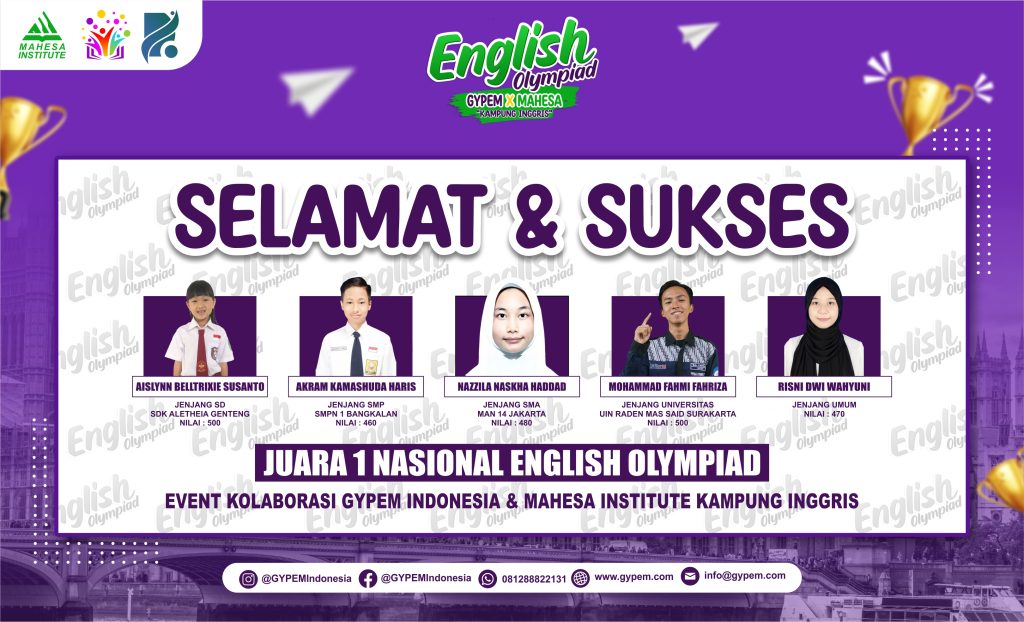
Ribuan Pelajar Se-Indonesia Memperebutkan Juara dari English Olympiad Kolaborasi GYPEM & Mahesa Institute
Minggu, 19 Maret 2023 secara serempak telah dilaksanakan English Olympiad gagasan Global Youth and Peace Education Movement (GYPEM) dari PT. Digital Edu Indonesia yang berkolaborasi dengan Mahesa Institute, salah satu lembaga di Kampung Inggris yang telah berdiri sejak tahun 1998. Ini bukan pertama kalinya, GYPEM sebagai platform kompetisi berskala nasional sudah untuk kesekian kalinya menyelenggarakan …
Ribuan Pelajar Se-Indonesia Memperebutkan Juara dari English Olympiad Kolaborasi GYPEM & Mahesa Institute Selengkapnya »
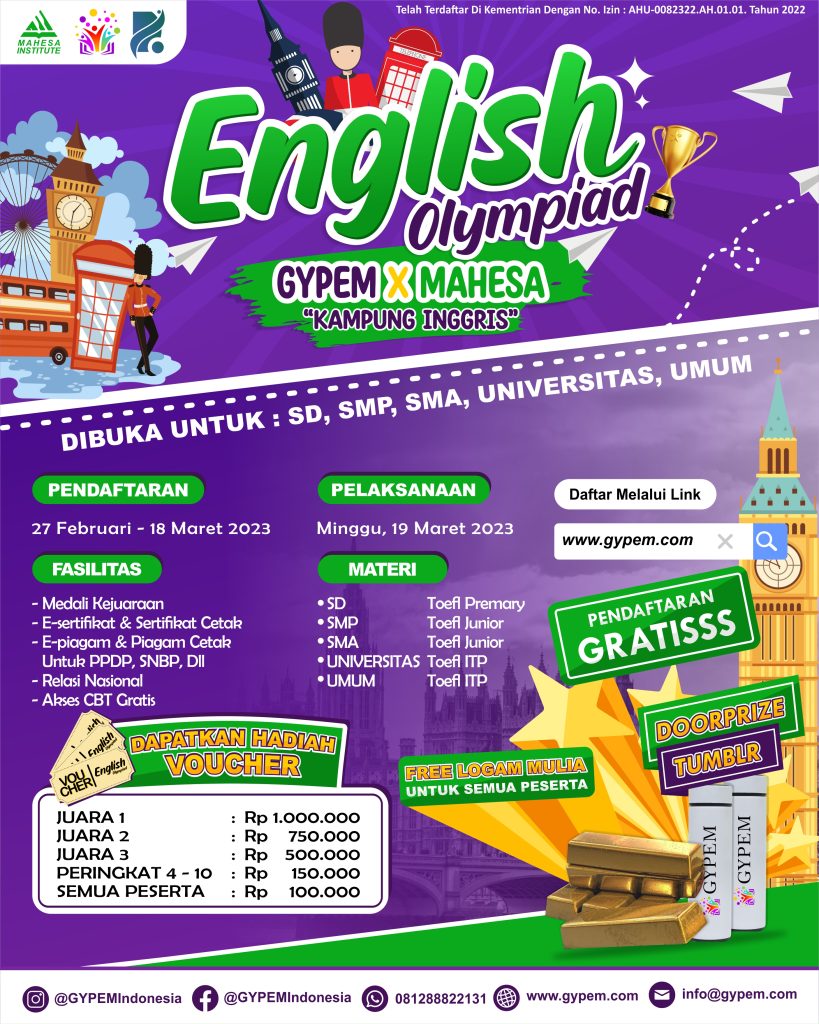
Berani Ikut Olimpiade Bahasa Inggris? Kolaborasi GYPEM dengan Mahesa Institute Kampung Inggris
Halo Sobat GYPEM! Setelah selesai dengan kegiatan ISLO beberapa pekan lalu, kini GYPEM kembali hadir dengan Olimpiade bertajuk bahasa inggris, nih! Khusus untuk Sobat GYPEM yang ingin mengasah pengetahuan dan kemampuan bahasa inggrisnya, wajib untuk berpartisipasi di English Olympiad ini. English Olympiad kali ini berkolaborasi dengan Mahesa Institute dari Kampung Inggris. Mahesa Institute adalah Lembaga …
Berani Ikut Olimpiade Bahasa Inggris? Kolaborasi GYPEM dengan Mahesa Institute Kampung Inggris Selengkapnya »

Indonesian Science Language Olympiad (ISLO) Berlangsung Seru! Selamat untuk Para Pemenang!
Sabtu-minggu, 4-5 Maret 2023 lalu menjadi hari yang menegangkan sekaligus menyenangkan, karena ribuan siswa/i dan mahasiswa dari seluruh Indonesia secara serempak mengikuti Indonesian Science Language Olympiad (ISLO) yang diselenggarakan oleh Gypem secara online. Mulai dari jenjang SD hingga Universitas, mulai dari mata pelajaran Matematika, IPA, IPS hingga Bahasa diujikan pada ISLO kali ini. Berbeda dengan …
Indonesian Science Language Olympiad (ISLO) Berlangsung Seru! Selamat untuk Para Pemenang! Selengkapnya »

Siap Berkompetisi? Indonesian Science Language Olympiad (ISLO) Hadir dengan Nuansa Kebudayaan
Halo Sobat Gypem! Tidak terasa tahun 2023 sudah akan memasuki bulan yang ketiga. Maret akan jadi bulan yang spesial karena Global Youth and Peace Education Movement (Gypem) kembali hadir dengan olimpiade yang tak kalah kompetitif dan menarik untuk diikuti. Indonesian Science Language Olympiad (ISLO) adalah sebuah kompetisi nasional yang terbuka untuk seluruh masyarakat Indonesia baik …
Siap Berkompetisi? Indonesian Science Language Olympiad (ISLO) Hadir dengan Nuansa Kebudayaan Selengkapnya »
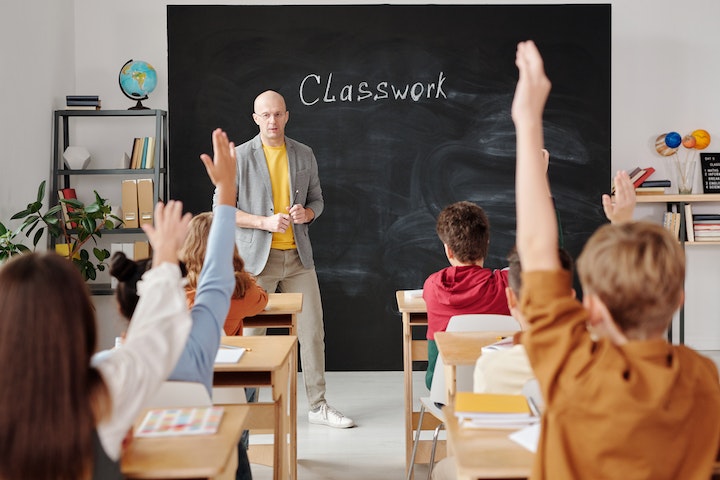
Cara Menang Olimpiade Sains Matematika Dengan Mudah
Olimpiade Sains menjadi salah satu kompetisi yang sangat populer saat ini untuk jenjang SD, SMP, dan SMA/sederajat yang salah satunya mencakup mata pelajaran matematika. Untuk mengikuti kompetisi ini tentu bukanlah hal yang mudah, karena banyak sekali persiapan yang harus disiapkan karena peserta didik akan dipertemukan dengan berbagai soal yang sangat sulit dan jarang ditemukan di …
Cara Menang Olimpiade Sains Matematika Dengan Mudah Selengkapnya »

Tips Sukses Olimpiade Sains Dengan Mudah
Bagi seorang peserta didik untuk meraih prestasi tentu bukanlah hal yang mudah. Untuk meraih prestasi terbaik bisa dilakukan dengan berbagai cara salah satunya dengan mengikuti olimpiade sains. Olimpiade Sains menjadi salah satu kompetisi bergengsi yang sering diadakan setiap tahunnya pada jenjang SD, SMP, dan SMA. Olimpiade ini menjadi olimpiade terpopuler dan terbesar di Indonesia saat …
Tips Sukses Olimpiade Sains Dengan Mudah Selengkapnya »
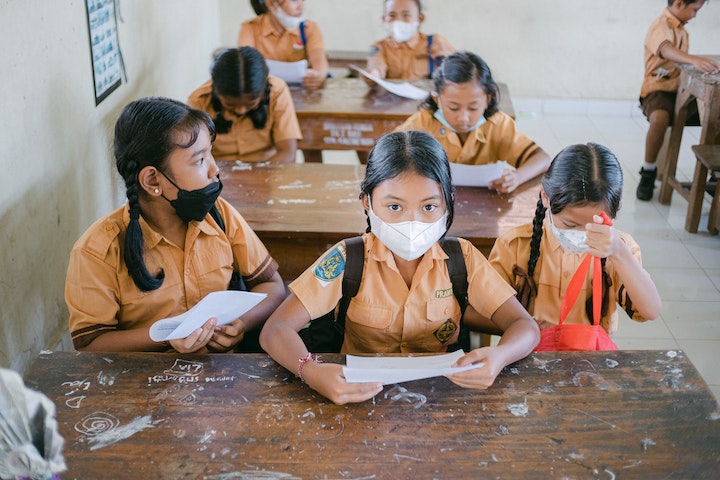
Manfaat Mengikuti Olimpiade Sains Nasional
Perkembangan zaman yang pesat dalam berbagai aspek menjadi tantangan untuk seluruh negara dalam menyediakan sumber daya manusia yang dapat menyesuaikan dengan perkembangan zaman. Tentu hal ini menjadi tanggung jawab pemerintah dalam menyediakan program yang bermanfaat agar bisa mendorong inovasi untuk generasi bangsa. Departemen Pendidikan, Kebudayaan, dan Teknologi Indonesia mengadakan secara rutin salah satu kegiatan yang …
Manfaat Mengikuti Olimpiade Sains Nasional Selengkapnya »
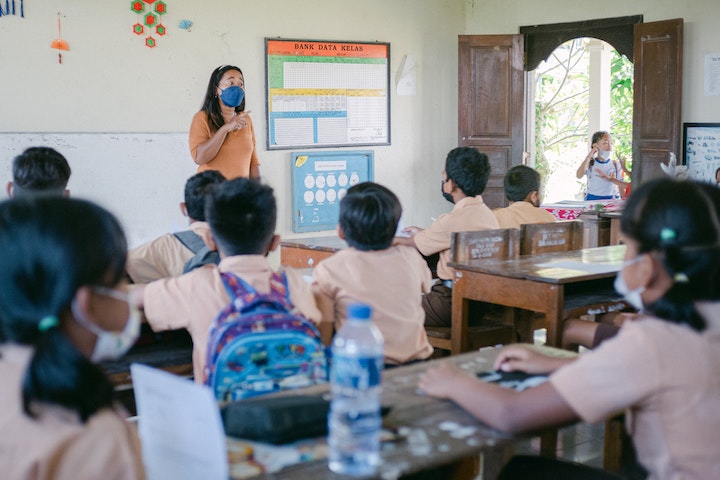
Sejarah OSN dan Perkembangannya
Seiring perkembangan zaman banyak sekali kemajuan-kemajuan yang diciptakan melalui inovasi dan kreasi para manusia sesuai dengan bidangnya masing-masing. Dengan perkembangan zaman yang semakin maju, tentu hal ini menjadi tantangan oleh setiap negara dalam menjawab kesiapan dan potensi sumber daya manusianya dalam menyesuaikan dengan perkembangan zaman. Hingga saat ini begitu banyak kemajuan-kemajuan yang sudah diciptakan melalui …
Sejarah OSN dan Perkembangannya Selengkapnya »

Apa Itu OSN?
Setiap tahun secara rutin lembaga Pusat Prestasi Nasional, Kementrian Pendidikan, Kebudayaan, Riset, dan Teknologi Republik Indonesia selalu mengadakan kompetisi untuk mendorong semangat dan inovasi para peserta didik untuk mendapatkan prestasi terbaik peserta didik pada bidang Sains bagi pelajar SD, SMP, dan SMA di seluruh Indonesia. Kompetisi ini diikuti oleh peserta didik yang harus lolos seleksi …
Apa Itu OSN? Selengkapnya »

World leaders renew commitment to “Youth, Peace and Security” agenda
Governments announce new actions to meaningfully include youth in peacebuilding efforts at the High-Level Global Conference on Youth-Inclusive Peace Processes
21 January 2022 (Doha, Qatar) — At the virtual High-Level Global Conference on Youth-Inclusive Peace Processes , more than 160 young peacebuilders from 74 countries joined discussions over two days with a diverse range of representatives from Governments, civil society, academia and multilateral institutions to explore opportunities and build partnerships for decision-makers to support youth-led and youth-inclusive peace efforts.
“A holistic approach to preventing conflicts and peacebuilding is needed — one that integrates peace and security with issues such as gender, climate and human rights. Young people are already making these interlinkages and leading by example. From monitoring ceasefires to defending democracy to taking climate action, young people have been innovating to mobilize broader constituencies and to create solutions,” said António Guterres, Secretary-General of the United Nations.
At the conference, a High-level Joint Statement underlining the need for accelerated implementation of the Youth, Peace and Security agenda around the world was launched by Government representatives of Colombia, Finland and Qatar. The event also featured the launch of A Guide for Public Officials in support of country-level operationalization of the Youth, Peace and Security agenda, as well as a first-of-its-kind Five-year Strategic Action Plan for Youth-Inclusive Peace Processes on strengthening youth-inclusive peace processes building on recommendations put forth by key stakeholders working in the space.
“Young people around the world are a critical catalyst when it comes to building more peaceful and resilient communities. It’s time we more adequately invested in the efforts of young peacebuilders, to ensure they have meaningful opportunities to contribute to inclusive peace processes,” said Jayathma Wickramanayake, the UN Secretary-General’s Envoy on Youth.
With a view towards ensuring that young voices can shape ongoing as well as future peace processes, the conference built on the global policy paper WE ARE HERE: An Integrated Approach to Youth-Inclusive Peace Processes , and served as an official follow-up to the International Symposium on Youth Participation in Peace Processes in Helsinki which took place in 2019.
“We affirm the need for an inclusive approach to peace, whereby women and young people have ownership of peace processes,” emphasized H.E. Sheikh Mohammed bin Abdulrahman Al-Thani, Deputy Prime Minister and Minister of Foreign Affairs of the State of Qatar. “This conference has demonstrated that we need a whole-of-society approach and that we must work together to create fairer, more inclusive, peaceful and sustainable societies.”
“Strengthening the dialogue between youth and decision-makers is a key element in advancing sustainable peace and security. The two outcome documents take our agenda several steps forward and implementing them will be critical in order to ensure further progress on this important agenda, particularly at the regional and country level,” said H.E. Pekka Haavisto, Minister for Foreign Affairs of Finland.
H.E. María Juliana Ruiz, First Lady of Colombia, underscored, “The national and international authorities must avail youth’s capacity and active participation, while young people have to use their powerful voices and their innovative ideas to be part of the solutions.”
During his closing remarks, young peacebuilder Mohammad Yahya Qanie from Afghanistan highlighted, “I ask our leaders to think of the legacy they leave behind and how they should be remembered by young people who are struggling today around the world. The Youth, Peace and Security agenda is a key to unlocking that legacy.”
The Global Conference is a joint initiative of the Governments of the State of Qatar, Finland and Colombia, as well as co-organized by the United Nations Office of the Secretary General’s Envoy on Youth (OSGEY) and Search for Common Ground (SFCG) in partnership with the United Nations Department of Political and Peacebuilding Affairs (DPPA/PBSO), the United Nations Entity for Gender Equality and the Empowerment of Women (UN Women), the United Nations Development Programme (UNDP), the United Nations Population Fund (UNFPA), Education Above All (EAA), and the United Network of Young Peacebuilders (UNOY).
For press inquiries:
Matthew Hunter Office of the Secretary-General’s Envoy on Youth [email protected] +1 (631) 829-4275
Share This Story, Choose Your Platform!
Related posts.
#LeadingSDG4 | Education2030
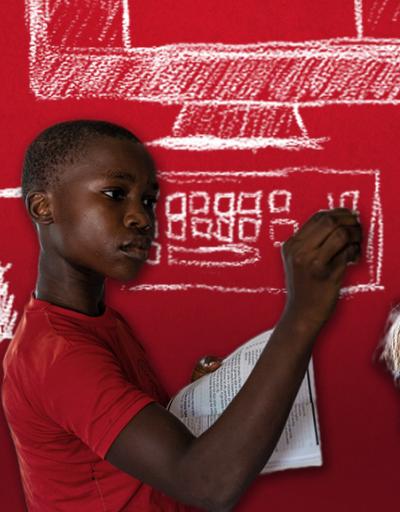
- Dashboard of country commitments
- Country profiles
- Global Education Observatory
- SDG4 scorecard
- Evidence and policy
- Education financing
- Global Education Coalition
- Futures of Education
- Greening Education Partnership
- Gateways to Public Digital Learning
- The Coalition for Foundational Learning
- Education in Crisis Situations: Partnership for Transformative Actions
- Global Platform for Gender Equality and Girls’ and Women’s Empowerment in and through Education
Global Youth Initiative
- Good practices
- Youth Declaration on Transforming Education
- SDG4 Youth & Student Network
- Youth Resources
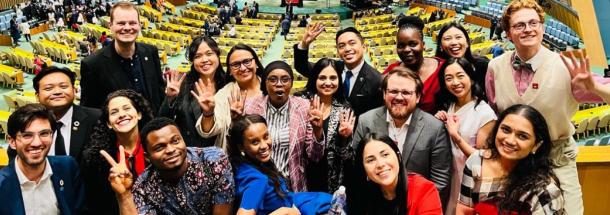
The Global Youth Initiative is the first multi-stakeholder, global initiative aiming to ensure meaningful youth engagement and leadership in education policymaking .
The Global Youth Initiative aims at addressing obstacles and bottlenecks preventing meaningful youth participation in a more systematic manner and at a larger scale, building on existing initiatives and lessons learned, drawing on the comparative advantages of key partners, and mobilizing additional resources to support youth engagement in education.
Seven regional youth consultations held in Africa, Arab-States, Asia-Pacific, Caribbean, Europe, Latin-America, and North America were held to shape the initiative and take forward the recommendations of the Youth Declaration on Transforming Education. The Youth Declaration, the first document of its kind and the outcome of months of consultation involving half a million youth in 170 countries, outlines the collective vision, proposals, and commitments from youth on transforming education. It serves as the basis of the Global Youth Initiative.
The Global Youth Engagement Indicator , which is currently in the making, will provide a measure of success and will be reported on annually, providing a better picture of the state of youth engagement in education at the national level.
Strategies and activities
The Global Youth Initiative is based on the premise that transforming education systems requires strengthened youth engagement, which means that youth must have access to adequate technical and financial resources, must be offered opportunities to engage meaningfully in decision-making processes, and that youth and student movements need to connect among each other and with other stakeholders to create a global education movement.
As such, the Global Youth Initiative is structured around the following three main components:
Youth Empowerment and Leadership: The capacity of youth and students, especially the most marginalized, is strengthened to help them become agents of change in transforming education in their specific national contexts.
Youth Engagement and Participation: Opportunities exist for youth and students to meaningfully engage and participate in all stages of decision-making processes.
Youth-led Global Education Movement: A youth-led global education movement is grown through increased collaboration and cross-fertilization among youth and student networks, and with other stakeholders .
This initiative will be coordinated and monitored by the Inter-Agency Secretariat of the SDG4 High-Level Steering Committee and the SDG4 Youth & Student Network , as the youth platform of the Global Education Cooperation Mechanism (GCM), together with the UN Office of the Secretary-General's Envoy on Youth.
A Youth Engagement Committee will be set up to bring partners together, take stock of progress and follow up on the overall implementation of the initiative. The committee will meet on a monthly basis and will prepare the reports to the SDG 4 High Level Committee.
How to engage
Stay tuned for updates on how to get involved with the Global Youth Initiative. At this time, we welcome all public and private donors interested in making a difference for young people in education, to support the initiative.

Related items
- UN & International cooperation

What is Peace Education ?
Peace Education is the process of promoting the knowledge, skills, attitudes and values needed to bring about behavior changes that will enable children, youth and adults to prevent conflict and violence, both overt and structural; to resolve conflicts peacefully; and to create the conditions conducive to peace, whether at an intrapersonal, interpersonal, intergroup, national or international level.
Peace education is any and all education for persons from young children through senior adults, which empowers them to understand the dynamics of conflict and peace, and develop skills in transforming conflict from destructive operations to constructive operations. Peace education is comprised of specific skills, even for young children. When persons learn empathy and compassion, when they learn to listen carefully, when they learn to solve problems with fairness and nonviolence, when they learn how to produce democracy and sustainability, these are some of the skills that constitute peace education.
A brief historical perspective of Peace Education
Peace Education Competences
Peace education programs are rich and diverse - there are many different forms of peace education, and each program must be relevant for the context in which it is grounded.
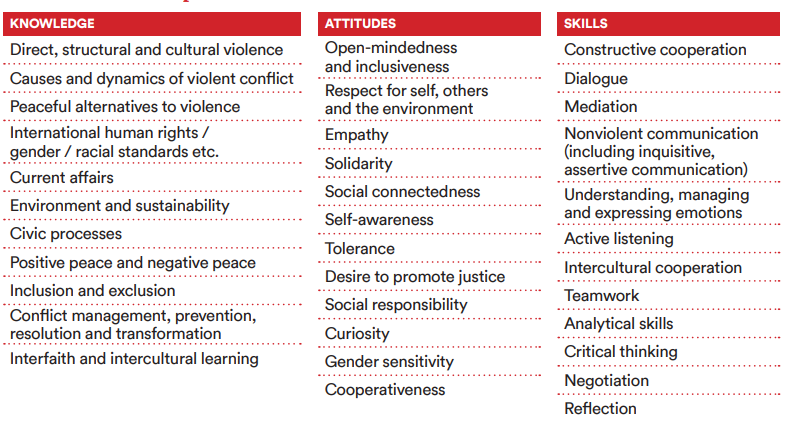
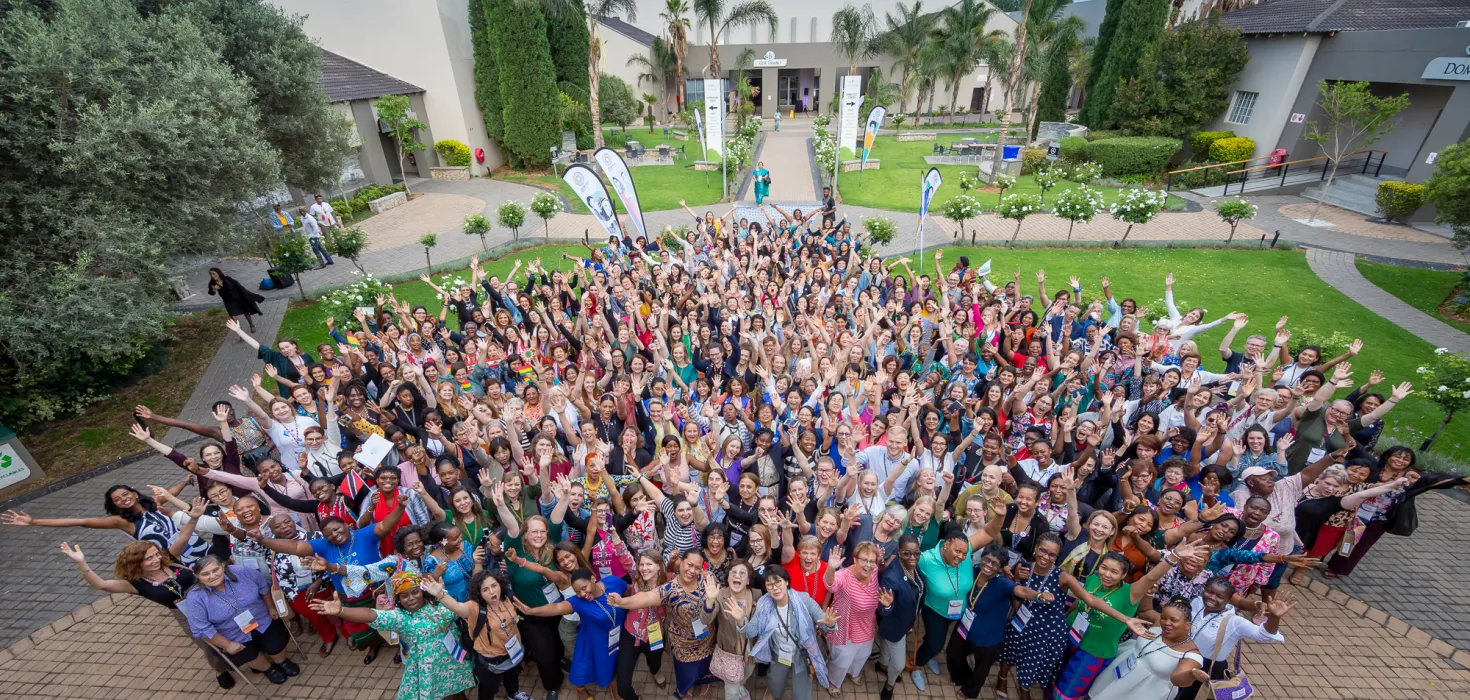
- Scouts for SDGs
Global Youth Mobilization
Young people were disproportionately impacted by COVID-19, and they are leading recovery efforts in education, mental health, job creation, and more. Global Youth Mobilization, a solidarity response with the World Health Organization and the "Big 6" alliance, supports young people by reinforcing positive youth-led contributions around the world, including direct funding to young people, their grassroots projects and advocacy.
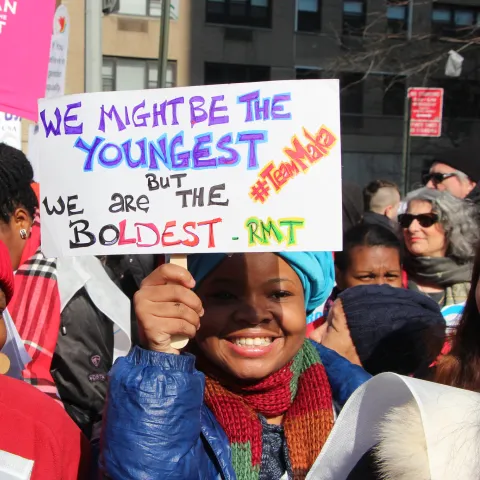
2021 Global Youth Summit
The Global Youth Summit was a milestone event for the Global Youth Mobilization where young people were heard and supported as critical agents of change in ongoing COVID-19 response and recovery efforts.
More than 1,600 young people, leaders, and policymakers met at the Summit to share experiences and implement solutions for improving lives post-pandemic.
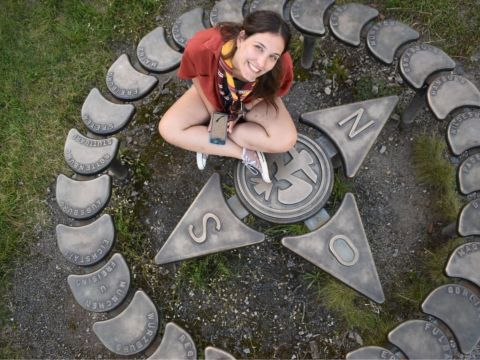
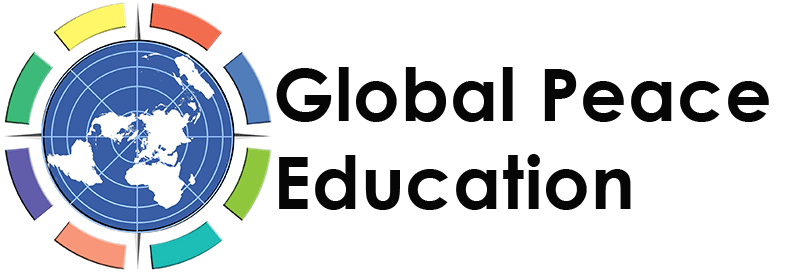
Global Peace Education Day
Virtual conference, empowering educators for peace, 20th september 2022 – 11 am new york time, the day’s programme, your conference chair and host: a welcome from them, conference chair:, gabriela ramos : unesco assistant director-general for the social and human sciences.

Conference Host:
Michael nouri : international screen actor; goodwill ambassador for seeds of peace and the multiple sclerosis society, virtual conference format.
The conference will be delivered via livestream in three language options (English, French and Spanish) in nine parts with keynote speakers, discussion panels and special features.
Each part will be followed by a break: for your reflection, relaxation and enjoyment of inspirational musical and video interludes.

Part 1: Call for a UN Day for Global Peace Education
Welcome from founders, alberto guerrero:, president, federación española de asociaciones,, centros y clubes para la unesco.

Ambassador Anwarul Chowdhury:
Distinguished featured speaker: founder, global movement for the culture of peace; former under-secretary-general and high representative of the un, why campaign for a united nations peace education day.
The United Nations declared 2021 as the International Year for Peace and Trust. The United Nations has established more than 150 international days for different humanitarian themes. However, there is no day dedicated specifically to the theme of peace education.
Because peace education is central to the United Nations central mission, it certainly deserves a special day for public awareness – a day to promote practical efforts in peace education throughout the world, a day to empower educators for peace; a day to connect and celebrate with others in the peace education field.
Keynotes: Call to the UN
Distinguished featured speaker anwarul chowdhury.
Founder; Global Movement for a Culture of Peace; Former Under-Secretary-General, United Nations; Former President, UN Security Council
Federico Mayor Zaragoza
Founder, Culture of Peace Foundation; Former Director General, UNESCO
Doudou Diene
Former Special Rapporteur on Contemporary Forms of Racism, Racial Discrimination, Xenophobia, and Related Intolerance
Ouided Bouchamaoui
2015 Nobel Peace Laureate, President, Tunisian Confederation of Industry, Trade and Handicrafts (UTICA)
Prof Karim Errouaki, PhD:
Vice-Prime Minister and Minister of Finance, Foreign Affairs and International Development, the State of the African Diaspora (SOAD), President Emeritus of the American University of Europe, Former Special Advisor to the UN SG late Prof. Boutros Boutros-Ghali, Ambassador of OLA-DSCC to the UNECA, African Union and CAFRAD-PanAfrican Intergovernmental Organization.
Reiner Braun
Executive Director, International Peace Bureau
Garry Jacobs
President and CEO, World Academy of Arts and Sciences
Ambassador Amat Al Alim Alsoswa
Former Minister of Human Rights, Yemen; former UN Assistant Secretary General, UNDP Assistant Administrator, and Regional Director of the Arab States Bureau
Francisco Rojas
8th Rector, University of Peace (UPEACE), Costa Rica

Part 2: A Culture of Peace
What skills and knowledge do we need to build a culture of peace on a healthy planet? Some leading voices offer examples.
Federico Mayor Zaragoza: Founder, Culture of Peace Foundation; Former Director General, UNESCO
Prem rawat: author; founder of the prem rawat foundation and the peace education program. , steve killilea am: founder & executive chairman, the charitable foundation; institute for economics and peace, ramu damoradan: former chief of academic impact, united nations, alexander laszlo, phd: human evolution to peace, willow baker: program director, peace education program, tprf, special features.
Tony Jenkins, PhD: Mapping Peace Education “Peace Education for Living in Right Relationship in a Culture of Peace”, Dot Maver, PhD ., National Peace Academy USA -->
Part 3: Restoring Humanity
What skills must we learn to support more than a million people forced to flee their homes by conflict, climate change and persecution? Can peace education make us more human?
Keynote – Peace Skill: Right Relationship
Lisa worth huber phd: president and board chair, national peace academy, guila clara kessous, phd: moderator – unesco artist for peace, richard f. mollica, md, mar: professor of psychiatry at harvard medical school and director of the harvard program in refugee trauma (hprt) at massachusetts general hospital, enayet khan: artist; photographer; publisher rohingya together; mentor, rohingya refugee youth in cox’s bazar, world’s largest refugee camp in bangladesh., professor nisha sajnani: is the director of the program in drama therapy, chair of the creative arts therapies consortium and international research alliance, and founder of the arts and health initiative at new york university., héloïse onumba-bessonnet: victimologist specialising in sexual violence in armed conflict. loba association, project manager for re-création by loba., part 4: peace & justice, bishop horace smith, m.d: pastor, chicago apostolic faith church, philip shelton: moderator – director, fair housing & equal opportunity, indianapolis, us department of housing and urban development., rita rubin long: educational consultant. peace education facilitator. kent state survivor., david weinberg: executive director, global peace education network, inc., conversation, chic dambach: president emeritus, alliance for peacebuilding, part 5: peace & leadership.
How do peacebuilding skills merge with global economics to promote a culture of peace? How will peace education stop the scourge of prejudice and violence?
Stephane Monney Mouandjo, PhD: Directeur Général, Centre Africain de Formation et de Recherche Administrative pour le Développement (CAFRAD)
Marc levitte: moderator – executive coach; senior facilitator, the art of hosting., bakari sidiki diaby: founder, cadha-afrique, rachidi adam: president, paix et education; assistant administratif, fodefca, philippe rio: mayor, grigny, france; vice-president, sustainable development, energy transition, water cycle and biodiversity, grand paris sud; vice-president of city and suburbs; president, association “maires pour la paix france”. on september 13, 2021, the world mayor foundation named him “best mayor in the world”., special feature.
Michael Nouri: Reading Letter from Matsui Kazumi, President of Mayors for Peace; Mayor, Hiroshima, Japan
Part 6: Peace & Planet
The UN Secretary General warns that “we’re sleepwalking toward climate catastrophe.” How can education reverse this trend? Young global activists showcase solutions
Kehkashan Basu: M.S.M. Founder, Green Hope Foundation
Francisca cortes solari: founder, filantropia solari, alexia leclercq: grassroots environmental justice organizer; co-founder, start: empowerment, part 7: arts and peace.
The language of the arts flows through borders and transforms lives. How do arts and culture nurture peace skills? Our artists offer a creative exploration.
Aixa Portero Y De La Torre PhD: Fine Arts Professor, University of Granada
Roundtable panel, alla rogers: moderator – artist & curator, richard dana: artist, melvin hardy: chairman, millennium arts salon, lucian perkins: independent photographer, and filmmaker, sarah tanguy: curator, part 8: peace & war.
Nuclear holocaust is closer than ever before. Armed conflicts are raging in 27 countries, with civilian populations mistreated by the military. How can peace education help end the threat of war?
Gina Langton MAMBM FRSA : Founder of 80,000 Voices Ltd, one of the partners of ICAN (the International Campaign to Abolish Nuclear Weapons), which was awarded the Nobel Peace Prize in 2017
Monica willard: uri and international academy for multicultural cooperation, fawziah al-ammar phd: is a senior research fellow with the sana’a center for strategic studies where she leads the center’s research on the psychological impacts of the ongoing conflict. she is an assistant professor of psychology at amran university, conversation:, tezekiah gabriel: executive director, pathways to peace, tadhi blackstone: institute of noetic sciences.
Our Purpose
In order to build a culture of peace on a healthy planet, the Global Peace Education Network connects peace educators and communities, advocates peace education policies and programs, and campaigns for an official United Nations Global Peace Education Day.

Privacy Policy - Terms & Conditions - Credits - Contact Us
© 2022 Global Peace Education Network LLC
Educating for Global and Local Peace
Emerging Visions, Hopeful Practices
Cite this chapter
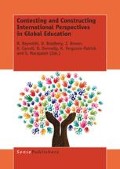
- Toh Swee-Hin 8
1021 Accesses
1 Citations
Humanity and planet Earth today faces a plethora of monumental crises spanning political, economic, social, cultural and environmental dimensions of existence and life. These crises need to be resolved and transformed urgently and mindfully to ensure the very survival of humanity.
- Armed Conflict
- Corporate Social Responsibility Practice
- Multicultural Education
- Video Game Violence
- Peaceful World
These keywords were added by machine and not by the authors. This process is experimental and the keywords may be updated as the learning algorithm improves.
This is a preview of subscription content, log in via an institution to check access.

Access this chapter
- Available as PDF
- Read on any device
- Instant download
- Own it forever
Tax calculation will be finalised at checkout
Purchases are for personal use only
Institutional subscriptions
Unable to display preview. Download preview PDF.
Abu-Nimer, M. (2002). The miracles of transformation through interfaith dialogue. In D. R. Smock (Ed.), Interfaith dialogue and peace building (pp. 15–32). Washington D.C.: United States Institute of Peace.
Google Scholar
Adams, D. (Ed.). (1995). UNESCO and culture of peace . Paris: Culture of Peace Programme, UNESCO.
Ahmed, N. M. (2003). Behind the war on terror . Gabriola Island, BC: New Society.
Anderson, S. (Ed.). (2000). Views from the south . Chicago: Food First Books.
Andreopoulos, G. J., & Claude, R. P. (1997). Human rights education for the twenty-first century . Philadelphia: University of Pennslyvania Press.
Andrzejewski, J. (2009). Education for peace and nonviolence. In J. Andrzejewski, M. P. Baltodano, & L. Symcox (Eds.), Social justice, peace, and environmental education (pp. 99–120) New York: Routledge
Au, W. (2009). Rethinking multicultural education . Milwaukee: Rethinking Schools.
Bajaj, M. (Ed.). (2008). Encyclopedia of peace education . Charlotte: Information Age Publishing.
Ballantine, E., & Hill, F. (2001). Lessons from past UN disarmament education efforts. Disarmament Forum , 3 , 13–17.
Bello, W. (2009). The food wars . London: Verso.
Boyce, B. (Ed.). (2011). The mindfulness revolution . Boston: Shambhala.
Brecher, J. (2003). Globalization today. In S. Aronowitz & H. Gautney (Eds.), Implicating empire. Globalization & resistance in the 21st century world order (pp. 199–210. New York: Basic Books.
Burch, M. (2000). Stepping lightly: Simplicity for peace and the planet . Gabriola Island: New Society Publishers.
Burns, R., & Aspeslagh, R. (Eds.). (1996). Three decades of education around the world . New York & London: Garland Publishing.
Caldicott, H. (2002). The new nuclear danger . Carlton North, Vic: Scribe Publications.
Carter, C. (Ed.). (2010). Conflict resolution and peace education: Transformations across disciplines . London: Palgrave MacMillan.
Cawagas, V. F. (Ed.). (2003). Education for international understanding toward a culture of peace. Teachers Resource Book . Seoul: Asia-Pacific Centre of Education for International Understanding.
Chomsky, N. (2003). Hegemony or survival . Crows Nest: Allen & Unwin.
Darder, A., Baltodano, M. P., & Torres, R. D. (Eds.). (2008). The critical pedagogy reader (2nd ed.). London: Taylor & Francis.
DeGaetano, G., & Grossman, D. (2014). Stop teaching our kids to kill: A call to action against TV, movie, and video game violence . New York: Harmony Books/Random House.
Development Education. (n.d.). Teachers and educators. www.developmenteducation.ie/teachers-andeducators/
Fein, J. (Ed.). (2010). Teaching and learning for a sustainable future . Paris: UNESCO
Fisher, W. F., & Ponniah, T. (Eds.). (2003). Another world is possible . London: Zed Books.
Freire, P. (1998). Pedagogy of freedom, ethics, democracy, and civic courage . Lanham, Maryland: Rowman & Littlefield.
Fountain, S. (1999). Peace education in UNICEF . New York: UNICEF.
Hamilton, C., & Denniss, R. (2005). Affluenza . Crows Nest, NSW: Allen & Unwin.
Harris, I. (Ed.). (2013). Peace education from the grassroots . Charlotte: Information Age Publishing.
Huckle, J. (2010). ESD and the current crisis of capitalism: Teaching beyond green new deals. Journal of Education for Sustainable Development , 4 (1), 135–142. Retrieved from http://john.huckle.org.uk/download/2947/JESDarticle2010.pdf
Inclusion International. (2010). The implications of the Convention on the Rights of Persons with Disabilities for education for all . London: Inclusion International.
James, C. E. (2003). Seeing ourselves: Exploring race, ethnicity and culture (3rd ed.). Toronto: Thompson.
Kagawa, F., & Selby, D. (Eds.). (2010). Education and climate change . London: Routledge.
King, L., & Schielmann, S. (2004). The challenge of indigenous education: Practice and perspectives . Paris: UNESCO.
Klare, M. T. (2012). The race for what is left . New York: Metropolitan Books.
Klein, N. (1999). No logo . New York: Picador USA.
Lantieri, P., & Patti, J. (1996). Waging peace in our schools . Boston, MA: Beacon.
Lin, J. (2006). Love, peace, and wisdom in education . Toronto: Rowman & Littlefield Education.
Loutzenhiser, L. W.. & Moore, S. D. M. (2009). Safe schools, sexualities and critical education. In M. A. Apple, W. Au, & L. A. Gandin (Eds.), The Routledge international handbook of critical education (pp. 150–162). New York: Routledge.
Lowman, R. L. (Ed.). (2013). Internationalizing multiculturalism . Washington, DC: American Psychological Association.
Machado, A. (2014, January 27). Should schools teach kids to meditate? The Atlantic . Retrieved from http://www.theatlantic.com/education/archive/2014/01/should-schools-teach-kids-to-meditate/283229/
Macy, J. R., & Brown, M. Y. (1998). Coming back to life: Practices to reconnect our lives, our world . Gabriola Island, BC: New Society Publishers.
Mays, R. K. (Ed.). (2008). Interfaith dialogue at the grassroots . Philadelphia, PA: Ecumenical Press.
Nieto, S., & Bode, P. (2012). Affirming diversity (6th ed.). Boston MA: Pearson Education.
People’s Movement for Human Rights Education. (2006). Human rights learning: A people’s report . New York: People’s Movement for Human Rights Education.
Philippine Council for Islam and Democracy. (2004). Interfaith dialogue and peace building in Mindanao. Interfaith Approaches to peace and development in Mindanao . Retrieved from http://www.muslimmindanao.ph/peace_process/Interfaith%20Dialogue%20and%20Peacebuilding%20in%20Mindanao.pdf
Reardon, B. (2002).Tasks and directions for the global campaign for peace education. Disarmament Forum, 3 , 19–26.
Religions for Peace. (2008). We can cooperate for peace . New York: Religions for Peace.
Renner, M., French, H., & Assadourian, E. (Eds.). (2005). State of the world . New York: W.W. Norton & Co.
Schell-Faucon, S. (2001). Conflict transformation through educational and youth programmes . Tubingen: Berghof Handbook for Conflict Transformation.
Schoberlein, D., & Sheth, S. (2009). Mindful teaching and teaching mindfulness . Somerville, MA: Wisdom Publications.
Seabrook, J. (2004). Consuming cultures: Globalization and local lives . Oxford: New Internationalist.
Shiva, V. (2005). Earth democracy, justice, sustainability and peace . Cambridge: South End.
Stromquist, N. P. (2007). Adult learning and the politics of change: Feminist organization and educational action in Latin America. In S. Fennell & M. Arnot (Eds.), Equality in a global context: Conceptual frameworks and policy perspectives (pp. 211–224). New York: Routledge.
Synott, J. (2004). Global and international studies. Transdisciplinary perspectives . Southbank, VIC: Social Science Press.
Tauli-Corpuz, V. (2005). Rights of indigenous peoples. Key to the promotion of cultural diversity. SangSaeng, 13 (Summer), 11–15.
Thich Nhat Hanh. (2003). Creating true peace . London: Rider.
Toh, S. H. (2005). Learning to live together: ‘Fighting’ stereotypes from textbooks to the internet. In D. Laqua & A. Salinas (Eds.), New ignorances, new literacies: Learning to live together in a globalizing world . (pp. 146–159) Paris: UNESCO.
Toh, S. H., & Cawagas, V. (Eds.). (2005). Cultivating wisdom, harvesting peace . Brisbane, Queensland: Multi-Faith Centre, Griffith University.
Toh, S. H., & Cawagas, V. F. (2010). Transforming the ecological crisis. Challenges for faith and interfaith education in interesting times. In F. Kagawa & D. Selby (Eds.), Education and climate change (pp. 175–196). New York: Routledge.
Toh, S. H., & Floresca-Cawagas, V. (1990). Peaceful theory and practice in values education . Quezon City: Phoenix Publishing House.
UNESCO. (2010). UNESCO world report. Investing in cultural diversity and intercultural dialogue . Paris: UNESCO.
UNESCO (2012). Education for sustainable development. Sourcebook. www.learningteacher.eu/sites/learningteacher.eu/files/esd_source.pdf
UNICEF. (2013). Know your rights! United Nations Declaration on the Rights of Indigenous Peoples for indigenous adolescents . New York: UNICEF. Retrieved from http://www.unicef.org/policyanalysis/rights/files/HRBAP_UN_Rights_Indig_Peoples.pdf
van Tongeren, P., Brenk. M., Hellema, M., & Verhoeven, J. (Eds.). People building peace II. Successful stories of civil society . London: Lynne Rienner Publishers.
Westhead, R. (2010, May 30). Bhutan ‘infusing’ happiness in math, science classes. thestar.com . Retrieved from http://www.thestar.com/news/world/2010/05/30/bhutan_infusing_happiness_in_math_science_classes.html
Witte, J., Jr., & Green, M. C. (Eds.). (2012). Religion and human rights. An introduction . Oxford: Oxford University Press.
Zeese, K., & Flowers, M. (2013, October 25–27). The global threat of Fukushima. Counterpunch . Retrieved from http://www.counterpunch.org/2013/10/25/the-global-threat-of-fukushima/
Zine, J. (2004). Anti-Islamophobia education as transformative pedagogy: Reflections from the educational front lines. American Journal of Islamic Social Sciences, 21 (2), 110–119. Retrieved from http://i-epistemology.net/attachments/847_Ajiss21-3%20-%20Zine%20-%20Anti%20Islamophobia%20Education.pdf
Download references
Author information
Authors and affiliations.
Peace & Conflict Studies, University for Peace, UN
Toh Swee-Hin
You can also search for this author in PubMed Google Scholar
Editor information
Editors and affiliations.
University of Newcastle, Australia
R. Reynolds
D. Bradbery
Australian Catholic University, Australia
D. Donnelly
K. Ferguson-Patrick
S. Macqueen
Rights and permissions
Reprints and permissions
Copyright information
© 2015 Sense Publishers
About this chapter
Swee-Hin, T. (2015). Educating for Global and Local Peace. In: Reynolds, R., et al. Contesting and Constructing International Perspectives in Global Education. SensePublishers, Rotterdam. https://doi.org/10.1007/978-94-6209-989-0_18
Download citation
DOI : https://doi.org/10.1007/978-94-6209-989-0_18
Publisher Name : SensePublishers, Rotterdam
Online ISBN : 978-94-6209-989-0
eBook Packages : Humanities, Social Sciences and Law Education (R0)
Share this chapter
Anyone you share the following link with will be able to read this content:
Sorry, a shareable link is not currently available for this article.
Provided by the Springer Nature SharedIt content-sharing initiative
- Publish with us
Policies and ethics
- Find a journal
- Track your research
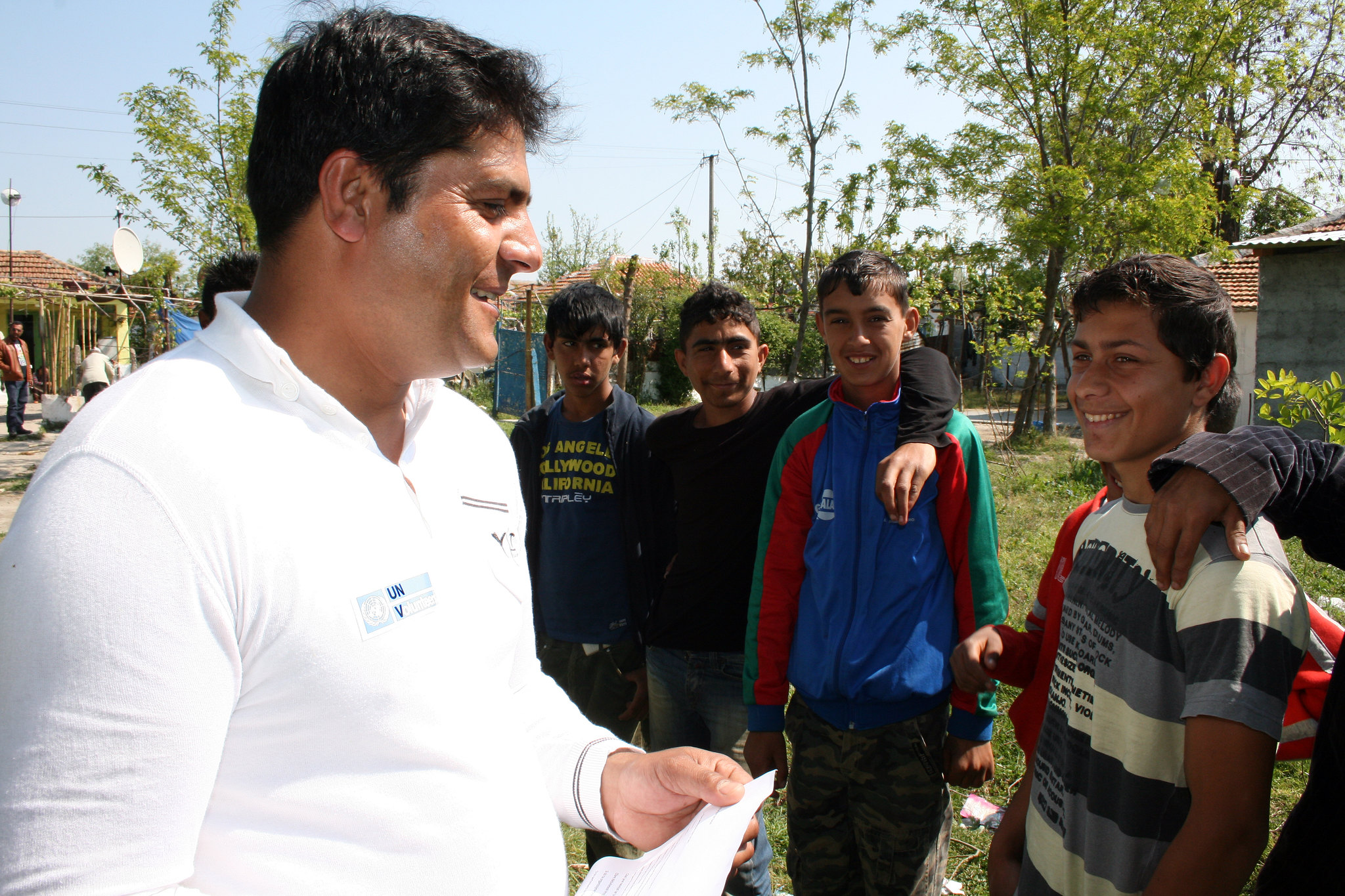
Youth empowerment
Today, the world is home to 1.8 billion young people, the largest generation of youth in history. They are more interconnected than ever before, and many are leading political, social, and economic change in their communities and societies. At the same time, young people face significant challenges and risks, disproportionately carried by girls and young women in many parts of the world. In many countries, youth exclusion is strongly evident, often crossing with other forms of marginalization linked to gender, location, culture and/or community, undermining development and social cohesion. In many cases, social norms continue to sideline youth, treating political and economic participation as the prerogative of older people. While a few national policy frameworks have started to pay deliberate attention to youth concerns, much more can be done. In all countries, youth need to be full participants in shaping and implementing the choices that affect them.
UNDP recognizes that young people can be positive agents of change and represent an immense and valuable potential that governments and institutions should nurture and invest in. UNDP seeks to enhance those aspects required for vibrant democratic governance, including by advancing initiatives focused on youth empowerment and engagement in peace and development processes.
Because youth are a significant force for sustainable development and key agents for social change, economic growth, and technological innovation, UNDP promotes and supports their empowerment. This is done by promoting fully inclusive governance, increasing youth participation in decision-making, ramping up youth employment, engaging youth in peacebuilding and gender equality programmes, and ensuring youth are a part of SDG integration, implementation, and monitoring.
UNDP also supports the capacity development of young people and youth-led organizations and the development of youth caucuses in government, parliament, and other bodies to be able to engage in dialogue and influence public decision-making processes. We engage with relevant stakeholders through outreach, advocacy, thought leadership, global networks, and policy debates, particularly in the context of the Sustainable Development Goals.
Stay up-to-date with how UNDP is working with and for youth worldwide by following @UNDP4Youth on Twitter. Use the hashtags: #Youth2030 | #Youth4Peace | #Youth4Climate | #16x16 | #Generation17
Explore more
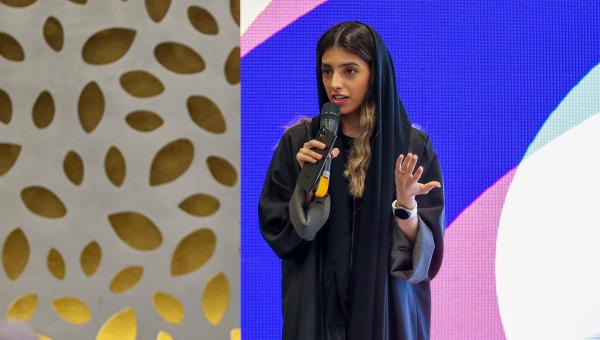
Why we need greater investment in women
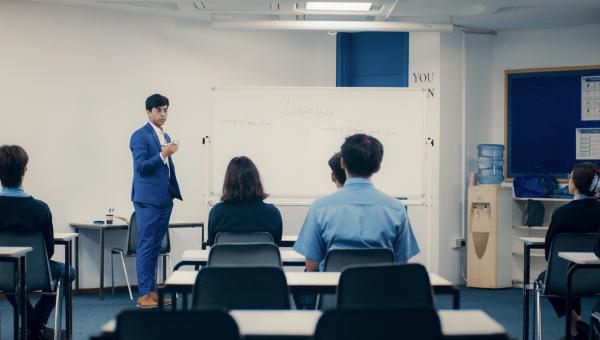
The future of education
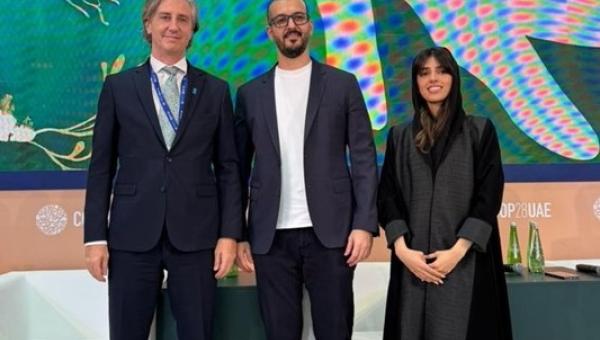
My message to world leaders on climate action
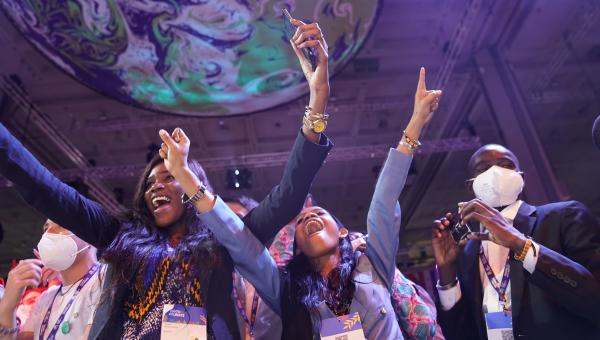
Rising up: How youth are leading the charge for climate justice
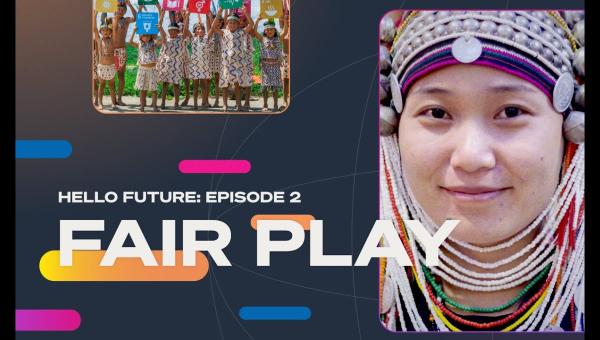
Five ways young people are contributing to their communities
Programs submenu
Regions submenu, topics submenu, china’s tech sector: economic champions, regulatory targets, previewing prime minister kishida’s visit to washington: a conversation with two ambassadors, leadership 2024, csis-csds transatlantic dialogue on the indo-pacific.
- Abshire-Inamori Leadership Academy
- Aerospace Security Project
- Africa Program
- Americas Program
- Arleigh A. Burke Chair in Strategy
- Asia Maritime Transparency Initiative
- Asia Program
- Australia Chair
- Brzezinski Chair in Global Security and Geostrategy
- Brzezinski Institute on Geostrategy
- Chair in U.S.-India Policy Studies
- China Power Project
- Chinese Business and Economics
- Defending Democratic Institutions
- Defense-Industrial Initiatives Group
- Defense 360
- Defense Budget Analysis
- Diversity and Leadership in International Affairs Project
- Economics Program
- Emeritus Chair in Strategy
- Energy Security and Climate Change Program
- Europe, Russia, and Eurasia Program
- Freeman Chair in China Studies
- Futures Lab
- Geoeconomic Council of Advisers
- Global Food and Water Security Program
- Global Health Policy Center
- Hess Center for New Frontiers
- Human Rights Initiative
- Humanitarian Agenda
- Intelligence, National Security, and Technology Program
- International Security Program
- Japan Chair
- Kissinger Chair
- Korea Chair
- Langone Chair in American Leadership
- Middle East Program
- Missile Defense Project
- Project on Fragility and Mobility
- Project on Nuclear Issues
- Project on Prosperity and Development
- Project on Trade and Technology
- Renewing American Innovation Project
- Scholl Chair in International Business
- Smart Women, Smart Power
- Southeast Asia Program
- Stephenson Ocean Security Project
- Strategic Technologies Program
- Transnational Threats Project
- Wadhwani Center for AI and Advanced Technologies
- All Regions
- Australia, New Zealand & Pacific
- Middle East
- Russia and Eurasia
- American Innovation
- Civic Education
- Climate Change
- Cybersecurity
- Defense Budget and Acquisition
- Defense and Security
- Energy and Sustainability
- Food Security
- Gender and International Security
- Geopolitics
- Global Health
- Human Rights
- Humanitarian Assistance
- Intelligence
- International Development
- Maritime Issues and Oceans
- Missile Defense
- Nuclear Issues
- Transnational Threats
- Water Security
Protests in Moscow: What’s Different This Time?

Photo: MAXIM ZMEYEV/AFP/Getty Images
Commentary by Jeffrey Mankoff and Cyrus Newlin
Published August 22, 2019
Opposition activists held one-man pickets across Moscow this past Saturday, the latest action in six consecutive weekends of demonstrations. Protestors are demanding that opposition candidates be allowed on the ballot in upcoming City Duma elections, and for the release of those detained at previous rallies. This summer’s demonstrations have a few distinguishing characteristics that suggest Russia has entered a new political era, one that could force the Kremlin into some difficult decisions ahead of upcoming parliamentary and presidential elections.
First, protests have been massive. With over 50,000 attendees , the officially sanctioned August 10 protest marked the largest since 2011-2012 Bolotnaya demonstrations . Despite credible threats of arrest, an unsanctioned protest on July 27 drew thousands of protestors , of whom more than 1,000 were detained. In the politically consequential Russian capital, 37 percent of Muscovites have voiced support for the protests, while 30 percent were neutral and 27 percent did not support them. These numbers refute the official line in state news outlets that recent protests are marginal.
Second, and anecdotally, a wider range of Russians are showing up at protests. While political activism in Russia is often compartmentalized among specific groups (Russians in the 18-25-year old category gave life to the 2017-2018 anti-corruption protests, and last year, pensioners turned out in numbers to protest pension reform), over the past six weekends Muscovites of varied ages and socioeconomic statuses have protested side by side. Some are new to politics entirely. One of Russia’s most well-known rappers, Oxxxymoron, announced his (unauthorized) performance at the August 10 rally to an audience of million-plus Instagram followers. He was joined on stage by other well-known performers taking their first public political stances, and presumably in the crowd by thousands of supporters heeding a call to action.
Third, protestors appear to hold mixed political views. A medley of signs and political banners appeared at recent demonstrations, underscoring that attendees do not all fall into what we normally think of as Russia’s opposition, for instance, supporters of anti-corruption campaigner Aleksey Navalny. Rather, Muscovites of different political stripes are offended by what they see as a blatantly rigged election. On August 17, a separate rally organized by Russia’s Communist Party took place under the banner “For clean and honest elections!” Videos of excessive police violence, particularly on July 27, seem to have touched a nerve in Moscow that has led a range of pundits and political voices to speak out in favor of the protests.
Fourth, the state’s response to protests has been unusually harsh. The newly created National Guard was deployed by the thousands to quell the unauthorized protest on July 27. Thousands were detained, many violently. Dozens are facing charges of inciting “mass unrest,” which carries up to eight years in prison. Navalny’s Anti-Corruption Foundation is facing unprecedented political pressure in the form of an anti-money-laundering investigation by Russia’s powerful Investigative Committee. Navalny himself is serving a 30-day jail sentence, and several other protest leaders have been repeatedly jailed, among them Ilya Yashin, whose disqualification from Moscow city elections sparked this round of protests (he was projected to win the race for Moscow’s 45th Krasnoselsky district), and Lyubov Sobol, a prominent lawyer with the Anti-Corruption Foundation who was running in Moscow’s 43rd District. The severity of the state response to protests in the Russian capital suggests it understands the political threat posed by growing protests and is determined to stem them.
Weeks of demonstrations in Moscow cap an uptick in political activism across Russia over the past two years. Years of falling real incomes have contributed to a general sense of restiveness: Russians’ willingness to protest is the highest in two decades , and the number of demonstrations recorded in Russia in 2018 was nearly double the number in 2017. In the past year, protests over waste disposal practices in Arkhangelesk, the construction of an Orthodox church in a public park in Yekaterinburg, the arrest of journalist Ivan Golunov on dubious drug charges in Moscow, and now the exclusion of opposition candidates from Moscow City Duma elections suggest a new normal in Russia, in which ordinary people are demanding a say in the political system. While the Kremlin has tolerated some local-level activism addressing quality of life and corruption issues (such as the Yekaterinburg protests, which led President Putin to halt the church’s construction), the current protests in Moscow are overtly political and are seen by the government as an unacceptable threat.
Both inside and outside of Moscow, Russians’ growing willingness to speak out seems in part the result of economic stagnation, which has frayed the traditional social contract of political acquiescence for a higher standard of living, allowing local-level issues to gain political momentum.
But despite a general malaise and the use of a common tactic—protests—to amplify grievances, these movements remain local in nature, and it is unclear if or how they could gain national traction that could in some way alter the status quo at the national level. The challenge for the opposition is first in articulating common themes from local-level grievances in order to connect and sustain these movements, and then in gaining footholds in regional and municipal elections. As the striking of opposition candidates from the Moscow City Duma election demonstrates, the movement faces clear structural disadvantages.
At the same time, this uptick in activism across Russia occurs in the context of an impending political transition, and upcoming elections could provide an occasion for the opposition to channel widely felt anger toward shaping the outcome. In advance of the 2021 parliamentary elections and, eventually, the 2024 presidential elections, support for the ruling United Russia party is at its lowest in over 13 years, and trust in Putin is its lowest since 2006 , at 31.7 percent, though his popularity rating seems to have steadied at 68 percent. Local-level protests in Moscow, Arkhangelsk, Yekaterinburg, and elsewhere do not pose a direct threat to the government, but taken together they highlight the incompetence and corruption of local managers that exist within the system and could weigh on the Kremlin’s decision about how to handle the upcoming elections.
Through protests, Russians have signaled a new readiness to make their voices heard, even if the outcome or goal of demonstrations is not always clear. If it grows, this expectation—to be listened to— may shape the environment in which an impending political transition occurs. A smooth change of power will necessitate a degree of trust from the public. An erosion of this trust just at the time when it is most needed means political transition may not happen solely on the Kremlin’s terms.
Cyrus Newlin is an adjunct fellow (non-resident) with the Russia and Eurasia Program at the Center for Strategic and International Studies (CSIS) in Washington, D.C. Jeffrey Mankoff is deputy director and senior fellow with the CSIS Russia and Eurasia Program.
Commentary is produced by the Center for Strategic and International Studies (CSIS), a private, tax-exempt institution focusing on international public policy issues. Its research is nonpartisan and nonproprietary. CSIS does not take specific policy positions. Accordingly, all views, positions, and conclusions expressed in this publication should be understood to be solely those of the author(s).
© 2019 by the Center for Strategic and International Studies. All rights reserved.

Jeffrey Mankoff

Cyrus Newlin
Programs & projects.
- Russian Internal Dynamics
Russian Activists Just Won an Important Battle Over LGBTQ Rights. But the War Is Far From Over
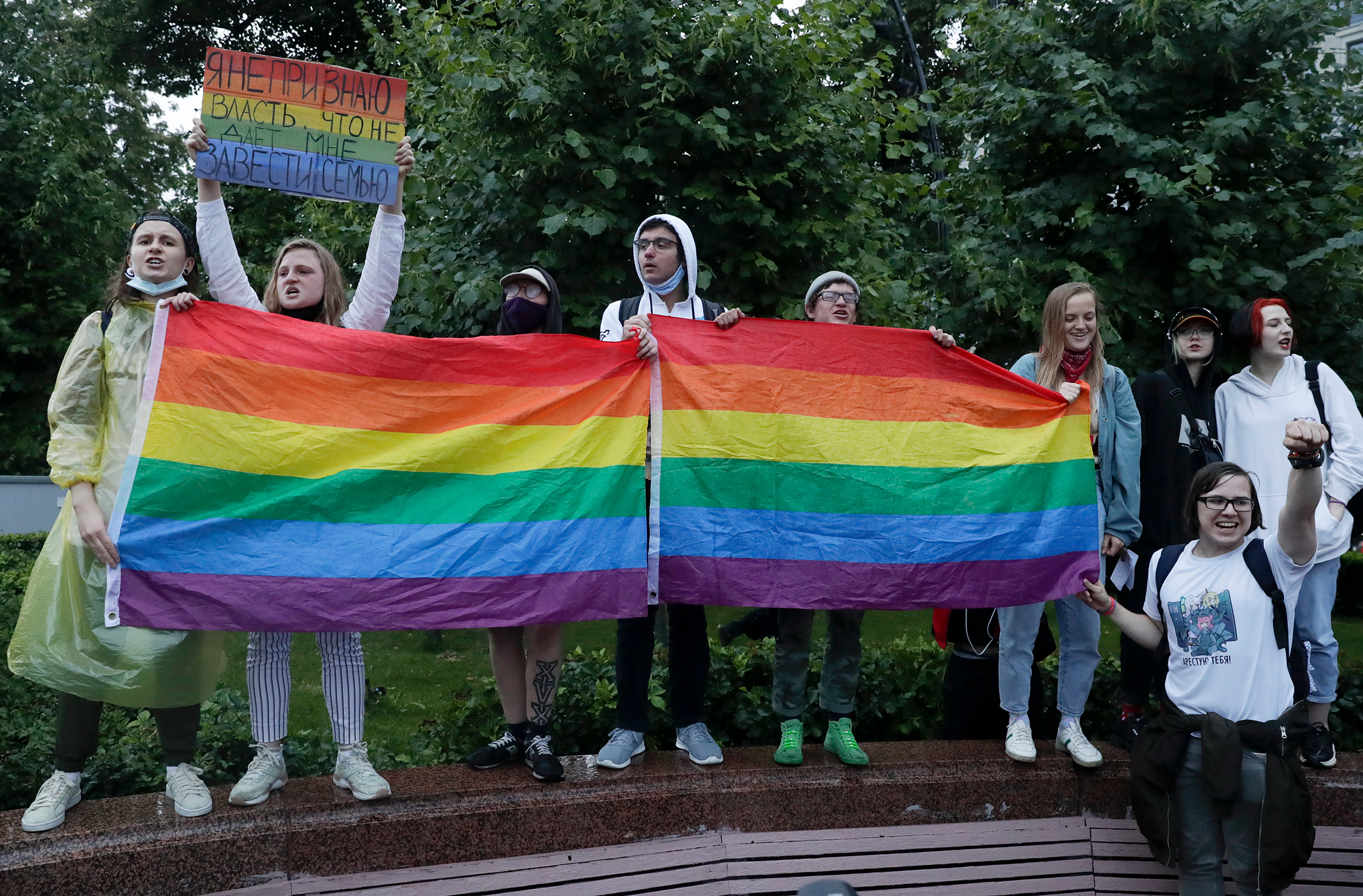
T here aren’t many people like Yulia Tsvetkova in Komsomolsk-on-Amur. The Russian city is 5,000 miles and seven time zones east of the capital, Moscow, and for half the year, it is under snow or ice. It’s known more for shipbuilding and aircraft manufacturing than LGBTQ rights and feminist activism — but that hasn’t stopped Tsvetkova forging a reputation in both. “There are practically no activists here, most of them try to leave,” she says, over a phone call. “But there’s still a lot I can do.”
In the past three years, the 27-year-old has headed a youth theatre, where she created plays that explored gender stereotypes, run online groups on feminism and sex education, and published drawings that she says promote LGBTQ and women’s rights on social media. Her activism has made her a target for the authorities. In July, about a week after the Kremlin pushed through constitutional amendments that include defining marriage as a union between a man and woman, Tsvetkova was fined for a second time under the country’s notorious “gay propaganda” law and forced to pay 75,000 Rubles ($1000) over her colorful illustrations of same-sex couples and their young children.
Tsvetkova is now facing charges of “spreading pornography” for a Vagina Monologues page she published on social media last November, which features illustrations of vaginas, aimed at breaking the stigma around women’s bodies. “I laughed, my lawyer laughed, my friends laughed. Anyone can see that this isn’t pornography,” she says. Yet she spent four months under house arrest and prosecutors are relentlessly trying to build a case against her. If she is found guilty, as 99% of those prosecuted in Russia’s criminal courts are, she could be sent to jail for up to six years. Tsvetkova has become a symbol of the resistance against Russia’s enforcement of “traditional values” and despite the Kremlin’s attempt to stigmatize her activism, she has received unprecedented support from celebrities, artists and journalists across Russia and beyond.
The defiance of Tsvetkova and many other LGBTQ activists in Russia may finally be paying off. Two weeks after the constitution was changed, the government proposed a bill to ban same-sex marriage and end the legal recognition of transgender people. Many activists had expected the landmark bill, co-authored by conservative lawmaker Elena Mizulina, to pass in the fall. But on Nov. 16 parliament revoked the bill for revision and it could now be scrapped altogether.
Svetlana Zakharova, a spokesperson at the Russian LGBT Network in St. Peterburg says she can’t say for sure why the law was repealed, but emphasizes that the LGBTQ community and its allies in Russia managed to unite to resist the legislation “more than ever before”. “Our activities, together, helped to dismiss the bill,” she says. Mizulina lost support because of the “tremendous level of public outrage about the bill’s homophobia and transphobia,” Jonny Dzhibladze, a coordinator at Vykhod (“Coming Out”), a St.Petersburg based LGBT rights group, says. “It looks like we can breathe freely for some time,” he says.
But a battle won does not mean the war is over. The climate for LGBTQ people in Russia is still extremely hostile. According to a 2019 report by the Russian LGBT Network, 12% of LGBT people surveyed reported being subject to physical attacks, and 56%, psychological abuse. LGBTQ activists have been arrested, attacked and killed . “If you live your life quietly and you do not make demands from the government, you do not express yourself publicly as an LGBT person, the government is not going to go after you,” says Tanya Lokshina, associate director for Human Rights Watch’s Europe and Central Asia division. The repeal of the bill is unlikely to change that situation. “It’s not as if everything was fine before the bill, and if it passed, everything would be bad,” says Tsvetkova. But it does seem like “we’re in a moment of transition between accepting what’s around us and challenging it,” she says.
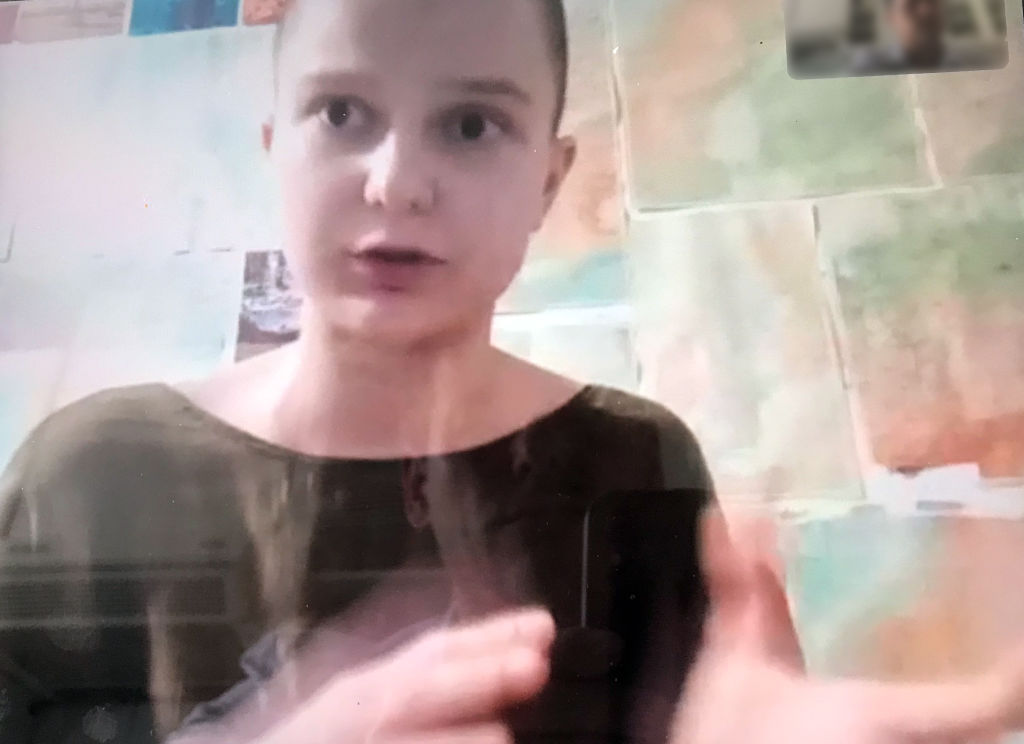
Russia’s culture of intolerance
Over the past 20 years, Russian President Vladimir Putin has closely aligned himself with the socially conservative Orthodox Church and has enacted legislation in purported defense of “traditional values” that activists say has promoted a culture of hostility toward the LGBTQ community. Russia is already one of the least LGBTQ friendly places in Europe, ranking higher than only Armenia, Azerbaijan and Turkey in the 2019 Rainbow Index , by Brussels-based advocacy group Ilga-Europe. In 2012, Moscow city authorities banned pride events for 100 years.
A year later Putin passed the so-called “gay propaganda” law, which bans information deemed to promote homosexuality to minors. The punishments were not severe, but it made it more dangerous for LGBTQ activists to claim their rights and stifled access to support services for LGBTQ youth. Alexander Kondakov, a researcher at the Centre for Independent Social Research in St. Petersburg says “It cannot be denied that the discriminatory law and the hateful rhetoric around LGBT rights at the time influenced an increase in violence towards LGBT people”.
Then came this year’s bill. Activists say the legislation represented an escalation, taking aim at the rights of transgender people in particular. It was a “tremendous blow” for the trans community in Russia, says Lokshina. Activists say that ending legal recognition – banning transgender people from changing the sex on their birth certificate – as the bill proposed, would further marginalize an already vulnerable group and open the way for more discrimination.
Alexei Lis, a 36 year-old activist and transgender man from St. Petersburg says that “If the police stop me and ask for my I.D. and see a woman’s photo, I could be harassed and beaten.” Gaining legal recognition is “an important step for transgender people in intergrating in society”, in terms being able to apply for jobs and access medical services without fear of discrimination, says Reinera Veles, an 23 year-old activist and transgender woman from Moscow.
For many LGBTQ people and their allies, the bill was a step too far. Russian LGBTQ activists fought back through campaigns including a social media movement ( #ProtectRussianTransLives ) and a petition that has been signed by almost 23,000 people. Dozens of doctors specializing in gender transition also condemned the move. In an appeal to lawmakers, medical professionals wrote that the bill will “destroy” the process of full gender transition by ending the legal recognition of transgender people. They said that the practice, which has been in place for decades in Russia, is “extremely important” for the “socialization” of transgender people. Banning it would “aggravate” gender dysphoria, they said.
High profile figures also joined the protest, including playwright Valery Pecheikin, opposition politician Dmitry Gudkov, and lawmaker and TV presenter Oksana Pushkina. Defying her colleagues in Putin’s United Russia party, Pushkina called it “an absolutely insane law” in an interview with TV Dozhd (“Rain”) , one of the country’s few remaining independent outlets. Referring to Article 19 of Russia’s Constitution, which guarantees equal rights and freedoms to all citizens, she emphasized that “sexual orientation cannot be the basis for restricting civil rights.” Afterwards, several LGBTQ activists wrote open letters to Pushkina explaining how the bills would affect them.
The Russian government has entrapped itself, says Lokshina. “The more the government cracks down, the more vigorous LGBT activism in Russia becomes,” she explains. “One of the greatest developments” that she says she’s seen in her 20 years of human rights work in Russia is the “the mainstreaming” of the LGBTQ rights movement. “Seven or eight years ago LGBT activists were seen as separate from the human rights community. The mainstreaming happened because of the crackdown,” she says.
Justice for Yulia
The widespread criticism over Tsvetkova’s persecution is a case in point. Several high profile figures have publicly defended her over the “pornography” investigation, including TV host and former presidential candidate Ksenia Sobchak, actress Renata Litvinova, and veteran broadcaster Vladimir Pozner. They urged the authorities to protect the activist, who says she has received death threats from an anonymous homophobic network called Saw that publishes the names and contacts of LGBTQ people, and calls for violence against them. LGBTQ activist Elena Grigoryeva was murdered in July 2019 after her details appeared on Saw’s website.
Opposition grew. In June, over 500 Russians across the country staged single person pickets in solidarity with Tsvetkova. Police responded aggressively, detaining 40 demonstrators in Moscow and St. Petersburg. The same month, over 50 media outlets organized a “Media Strike for Yulia”, demanding that the “pornography” investigation be dropped. Writers, journalists, actors, influencers, and bloggers published articles, including in Vogue , under the hashtag #forYulia and #FreeJuliaTsvetkova, and some 248,000 people signed an online petition calling on authorities to drop the case against her.
Until recently, very few public figures in Russia were voicing their support for LGBTQ issues, says Zakharova, at the Russian LGBT network. “It shows that society is changing. It’s not as homophobic as our officials and religious leaders think,” she says. While the Russian public is still deeply divided on LGBTQ rights, support for the community appears to be growing. A 2019 poll by the Levada Center, an independent polling agency in Moscow, found that 47% of Russians support equal rights for the LGBTQ community, the highest level in 14 years (43% were not in support). The trend is especially pronounced in 16-18-year-olds , 81% of whom reported a “friendly or calm attitude” toward LGBTQ people and 33% reported having LGBTQ acquaintances, compared to 42% and 8% respectively among the general public . “There’s a lot of hope in young people,” says Zakharova.
While there is little evidence that Putin’s ruling party is becoming less hostile to LGBTQ people, there seems to have been a shift in attitudes among Russia’s democratic opposition figures. In 2009, Russia’s most prominent opposition figure Alexei Navalny suggested that gay people could “frolic” in a cordoned stadium rather than in public in a Pride Parade. Yet during his bid for Moscow mayor in 2013 and an aborted run for the presidency in 2017, he proposed to allow regional referenda on same-sex marriages. More recently, in June, he accused the government of going “completely crazy” after pro-Kremlin media group Patriot released a homophobic political advert . Sobchak, the TV host, in 2011 doubted the need for same-sex marriages. “I just don’t understand why this phenomenon should be called marriage,” she said. But as a presidential candidate in 2018, she included same-sex civil unions and the lifting of the “gay propaganda” law in her political program .
The repeal of the bill was an important win for Russia’s LGBTQ community, but it’s just one victory. “It’s not the end point,” Tsvetkova says. “Homophobia is a daily reality in Russia”. Battling that requires the daily work of LGBTQ groups across the country, the willingness of the the public to speak out about inequality and efforts of human rights lawyers as they defend LGBTQ rights activists, like Tsvetkova, who currently awaits the start of her trial. But many activists feel that the change that they have long been fighting for is finally in the air.
More Must-Reads From TIME
- Jane Fonda Champions Climate Action for Every Generation
- Passengers Are Flying up to 30 Hours to See Four Minutes of the Eclipse
- Biden’s Campaign Is In Trouble. Will the Turnaround Plan Work?
- Essay: The Complicated Dread of Early Spring
- Why Walking Isn’t Enough When It Comes to Exercise
- The Financial Influencers Women Actually Want to Listen To
- The Best TV Shows to Watch on Peacock
- Want Weekly Recs on What to Watch, Read, and More? Sign Up for Worth Your Time
Contact us at [email protected]
You May Also Like

Youth Leading the Movement: A Global Dialogue on Anti-Racism

On November 20, the Global Campaign for Peace Education (GCPE) hosted “Youth Leading the Movement: A Global Dialogue on Anti-Racism,” a webinar focused on foregrounding youth voices in the current anti-racism and anti-ethnic discrimination movement around the world.
The webinar’s goal was three-fold: 1) facilitate a productive global dialogue on the issues of racial and ethnic discrimination, 2) act as an empowering platform for youth voices in the peaceworking space, and 3) explore the approach of peace education as a means to transform oppressive systems.
The webinar featured 3 panels, providing a space for regional dialogue amongst youth activists from USA & Canada, Eastern Europe & Eurasia, and Southeast Asia. A 30-minute live dialogue and Q&A session followed the panels.
The dialogue was designed and coordinated by youth interns of the Global Campaign for Peace Education: Keaton Nara, Nareg Kuyumjian, Nazeleh Jamshidi, and Caelan Johnston. We hope this event to be a catalyst for future youth-led and youth-focused efforts of the Global Campaign.
Full Webinar
Video recordings of the full webinar and regional dialogues are now available.
Regional Panels/Interviews (*also included in the full webinar)
Central Asia
Youth Panelists

Americas Panelists
Alison chan – canada.
Alison Chan is a community-oriented developer of organizations, programs, people, projects, products, and partnerships. She lives in and grew up in the traditional unceded territories of the Coast Salish peoples (səl̓ilwətaɁɬ təməxʷ (Tsleil-Waututh), S’ólh Téméxw (Stó:lō), xʷməθkʷəy̓əm (Musqueam)), also known as Vancouver, BC, Canada. Her interest in the success and intersectionalities of people, society, technology, and teams led to over 14 years of experience working and volunteering in program development, business development, communications and marketing, campaigns, human resources, operations, and web development roles. Her work and perspectives are built on the foundation of studying discourses, society, politics, cultures, languages, geography, and psychology as an immigrant, person of colour, traveler, and athlete. She spent a large portion of her undergraduate degree studying power, civil society, and governments around the world. She is the former Executive Director and interim Communications Director of STAND Canada, a youth-led anti-genocide organization.
Kathy Sun – Washington, DC
Kathy Sun is the Special Assistant to the CEO at Search for Common Ground, the world’s largest dedicated peacebuilding organization. In her role, she leads the strategy and implementation of the organization’s efforts to spread peacebuilding mindsets and skills beyond its on-the-ground programming. Her work and interests focus particularly on young people in the US. Previously, Kathy was a Strategy & Operations Consultant at Deloitte Consulting, where she worked at the intersection of healthcare and exponential technologies, such as AI and blockchain. She also led the probono relationship with the CEO of an anti-human trafficking nonprofit. Kathy graduated from Swarthmore College with an Honors degree in Economics and Education.
Elaine Williams – Virginia
Elaine Williams is an activist, organizer, and advocate for equity and justice for marginalized communities. Elaine currently serves as the Director of RVA Thrives with Virginia Community Voice. She is an expert in bringing an equity lens into housing, homeless services, and community engagement. She is passionate about equipping individuals in marginalized communities with the tools to make decisions around issues that impact their community on a daily basis. Elaine’s life goal is to inspire people to tap into their inner light that will lead to their awakening to becoming the best version of their authentic self. In her free time, she enjoys spending time with family, doing modern calligraphy, and training to become a runner.
South Asia Panelists
Abdul ghafar nazari – afghanistan.
Abdul Ghafar Nazari, Civil Society Activist. He is currently working as Senior Advisor to a justice project. He has over 13 years of experience working with leading organizations. He has held leadership and management roles and worked with various sectors from NGO to Banking from Telecommunications to Projects. He also volunteers with many national and international organizations. He is a fellow of Asia 21 Young Leaders, One Young World Ambassador, He is an alumnus of the U.S. Department of State-sponsored Tech Forum Central Asia, World Youth Festival, and the Friedrich Ebert Foundation’s Young Leaders Forum. Additionally, he was a delegate in Afghanistan and Pakistan Youth Dialogue, and a member of Reform and Change Network. He is certified as an international integrity officer. He has received numerous accolades from Afghanistan and abroad. He has been in the leadership role for many conferences and dialogues that are organized nationally.
Abdul holds a master’s degree in International Relations from University of Afghanistan and bachelor’s degree from the Law and Political Sciences Faculty of Kabul University, He has a diploma in Marketing from American University of Afghanistan, He has a Leadership diploma from Silk Road Solutions and is a graduate of Islam Qalah High School. He was a youth exchange student through the American Councils for International Education 2005.
Arwin Shams Siddiquee – Bangladesh
Arwin Shams Siddiquee, 17, is a high school student, aspiring writer, and social worker from Dhaka, Bangladesh. Arwin is currently engaged primarily as a writer for various youth organizations and has worked with issues ranging from animal welfare to special needs education. Arwin strives to professionally promote equity and fair treatment and actively push for these in every organization he works with. Arwin believes that differences such as gender, race, ethnicity and others should never be a metric for discrimination and that it is the duty of each of us to stand with our fellow human beings to create a better world for everyone.
Emarine Kharbhih – India
Emarine Kharbhih is the Program Manager of Impulse NGO Network , her work consists of scaling Impulse Model to neighboring countries like Nepal, Bangladesh and Myanmar and creating partnerships with stakeholders such as Governments, CSOs, Law Enforcement Agencies, Lawyers, Service Providers for Rehabilitation, Reintegration especially for cross border human trafficking cases. She engages with stakeholders at many levels in terms of organizing trainings to sensitize them through training of Media persons, law enforcement agencies, lawyers, NGOs and bridges the gap between them for smooth communication and proper assistance to trafficked persons and survivors.
Emarine Kharbhih represented Asia in International Youth Advisory Congress (IYAC) CEOP, London to formulate Policies and Key Recommendations on Online Safety and Security for Youth and Cyber Crimes for the United Nations Organisation.
In 2015, Emarine was involved in documenting Urgent Appeal on Human Rights Violations in India for India Desk at Asian Human Rights Commission in Hong Kong. During that time, she has also published a Critique on the Juvenile Justice Amendment Act 2015 and the Status of Women on Marital Rape in India, 2016.
She represented India in London, in a trip supported by the British High Commission in New Delhi, to participate in the Capacity Building of High Level Stakeholders in Using Information Technology, to Effectively Combat Human Trafficking in North East India under Impulse Model. She also participated in the Indian Delegates of the Cross Border Exposure and Learning Trip to Myanmar and Thailand under Impulse Model.
She is an Acumen India Fellow and G P Birla Fellowship for Women Leaders of Ananta Aspen Centre.
Heela Yoon – Afghanistan
Heela Yoon is the Founder and CEO of Afghan Women Welfare and Development Association (AWWDA) which is a grassroot level civil society organization based in Afghanistan working towards women and young women empowerment and capacity building. She is currently working at the Global Network of Women Peacebuilders (GNWP) as the Fourth Cora Weiss Peacebuilding Fellow, a one-year fellowship program managed by the Global Network of Women Peacebuilders for young women peacebuilders from conflict affected countries to support global advocacy at the United Nations Headquarters in New York for the implementation of the Women, Peace, and Security (WPS) and Youth, Peace, and Security (YPS) Agendas. As the Cora Weiss Peacebuilding Fellow in New York City, Heela supports the implementation of the Global Network of Women Peacebuilders’ Young Women for Peace and Leadership Program in Bangladesh, Indonesia, Myanmar, and the Philippines, which enhances the capacities of young women from conflict affected communities to build sustainable peace and promote gender equality. Heela has also contributed to data collection and analysis of key WPS and YPS priorities and recommendations from grassroots peacebuilding civil society organizations from over 40 countries, which will be used for global advocacy during the processes around the 25th anniversary of the Beijing Declaration and Platform for Action. Prior to joining GNWP as the Cora Weiss Peacebuilding Fellow, Heela worked as a Desk officer and Coordinator for the United Nations Department at the Ministry of Foreign Affairs Afghanistan (MoFA). She was responsible for handling the desks of United Nations Population Fund (UNFPA), International Telecommunication Union (ITU), International Civil Aviation Organization (ICAO), World Intellectual Property Organization (WIPO), and The Word Organization for Animal Health (OIE). She has also assisted the United Nations Assistance Mission in Afghanistan (UNAMA) and the Security Council Desks. She is currently a member of the committee for implementing National Action Plan (NAP) on UNSCR 1325 at MoFA. Heela graduated from Kabul University with a bachelor’s in law and Political Science in 2017. She has a second bachelor’s degree in BBA Finance from the American University of Afghanistan (AUAF). She is currently a member of Global Nomads Group and Soola’s School of Leadership Afghanistan and recipient of Chevening scholarship.
Having founded her civil society organization, Heela is committed to uplifting women from poverty and illiteracy and helping them participate in different spheres of life where they are needed.
Individual Interviews
Hulkar kayumova – uzbekistan.
Hulkar Kayumova has 16 years of professional experience, including 9 years in teaching English as a foreign language and 5 years in teacher training in Andijan. She is currently a Program Manager for Search for Common Ground, where she is administering a grant-making program for youth development organizations in the Andijan region. For the last 2 years, Hulkaroy has worked for Shinon Global, where she manages in-service professional development for healthcare workers, and coordinates care for patients in need. During her career, Hulkaroy has successfully completed two competitive IREX Programs: Teaching Excellence and Achievement (TEA) Program and the Edmund Muskie Fellowship Program. She has also managed projects in the field of education, supporting teachers in Professional Development and Coordinated Access Microscholarship Program by the US Department of State, as well as grant-funded public health projects focused on maternal health in rural areas. Hulkaroy holds both a degree in Journalism from Andijan State University and a Masters in Education with a focus on Special Education from the University of Utah (United States).
Andrii Sikoryn – Ukraine
Andrii Sikoryn is a 16 year-old teenager living in Ukraine. Andrii began a life of activism when he was 13, when he understood that this world needs changes and everyone– even children– can make them possible. As a youth peer-to-peer trainer and facilitator, activist, and change-maker, Andrii wants to make a difference in this world. Andrii is also a leader in the young initiative “Double N” – a team of teenagers from Ivano-Frankivsk (Ukraine), which works with youth participation, non-formal education, and culture. Double N creates projects from teenagers for teenagers. Together, this team of young people work to break down the age stereotypes and fight against ageism by challenging societal norms and empowering youth. Currently, Andrii is creating a community of active teens in the Carpathian region that educate and organize different social projects together. Andrii is also an organizer of numerous educational, cultural and art projects in Ivano-Frankivsk. He is even a trainer at the School of Cultural Management and Creative Industries. Today he works on research of youth participation in the Ukrainian educational system and designs methodologies to improve it according to youth needs and desires. Overall, Andrii believes that today the new generation has the power of creating positive changes in our world.
Dialogue Coordinators / Interviewers
This dialogue was conceived, coordinated, and conducted by GCPE’s 2020 summer interns from Georgetown University.
Keaton Nara is a student at Georgetown University (’22) majoring in Justice and Peace Studies, while minoring in Mandarin Chinese. She discovered her passion for peace education in high school, when she envisioned and created International Peer Education on Climate Change—IPECC—an organization designed to train high school students how to teach their peers about environmental justice. The organization’s mission is founded in a vision of global empathy, where students can become aware and compassionate about the different struggles other countries face from climate change. During her time at Georgetown, Nara has continued to study justice issues she is passionate about, including the Israeli-Palestinian conflict, mass incarceration, and environmentalism. Her vision for the future is founded in her desire to empower and educate communities across the world. Nara hopes to use her work with the Global Campaign for Peace Education to connect domestic and international communities in an effort to gradually transform global conflicts.
Nareg Kuyumjian is a senior studying International Relations at Georgetown University. As an undergraduate, he has engaged in the environmental movement on and off campus with his various forms of activism including field organizing to ban single-use Styrofoam in California, researching and analyzing circular economy systems, and revitalizing the recycling program on campus. He plans to build on his experience working on environmental issues by completing a dual-degree in Master’s in Public Policy and Master’s in Environmental Management with the intention of exploring more deeply how the sustainable management of resources can drive transboundary peacebuilding. Alongside his environmental work, Nareg is heavily involved in his Armenian-American community both in Los Angeles, his hometown, and in Washington DC. Upon other roles, he is proud of his contribution to the campaign that resulted in both houses of Congress recognizing the Armenian Genocide for the first time in US History. In all aspects of life, Nareg has always been one that sees the individual as part of the whole and intends to use his skills and experience to build united and empowered communities across the world.
Nazeleh Jamshidi is a student majoring in Government, and Justice and Peace, in Georgetown College. Nazeleh is a gender equality and human/women’s rights activist. She has extensive experience in designing, creating, and managing projects and programs that promote gender equality, women empowerment and human rights in developing and post-war countries, Afghanistan. She has assisted various governmental and International organizations such as Municipalities, the Department of Agriculture, the Afghan Red Crescent Society, the UN, and USAID to include gender perspectives as part of their policies, strategies, and Afghanistan-based foundational documents. Nazeleh is committed to human rights and women’s rights and she has helped a considerable number of women in 27 provinces of Afghanistan to recognize and claim their rights as humans and members of their communities.

Join the Campaign & help us #SpreadPeaceEd!
Check your inbox or spam folder to confirm your subscription.
Related Posts

The 2023 Nanjing Peace Forum “Peace, Security, and Development: Youth in Action” was held in Jiangsu, China

UNAOC Trains New Cohort of Young Peacebuilders from Latin America and the Caribbean

Peace Education for Youth: A Toolkit for Advocacy and Planning

The United Nations Alliance of Civilizations Announces New Cohort of Young Peacebuilders from Latin America and the Caribbean
1 thought on “youth leading the movement: a global dialogue on anti-racism”.
Pingback: The Freedom of Afghan Women Depends on Education and Empowerment - Global Campaign for Peace Education
Leave a Comment Cancel Reply
Your email address will not be published. Required fields are marked *
Yes, add me to your mailing list!

IMAGES
VIDEO
COMMENTS
About the Global Campaign. The Global Campaign for Peace Education (GCPE) was launched at the Hague Appeal for Peace Conference in 1999. It is a non-formal, international organized network that promotes peace education among schools, families, and communities to transform the culture of violence into a culture of peace. The Campaign has two goals:
There's an issue and the page could not be loaded. Reload page. 139K Followers, 14 Following, 308 Posts - See Instagram photos and videos from Global Youth & Peace Education Movement (@gypemindonesia)
In 2020, the Global Campaign for Peace Education hosted the webinar "Youth Leading the Movement: A Global Dialogue on Anti-Racism.". In this seminar, you have the opportunity to hear from young people from around the world about how they are working in the anti-racism and anti-ethnic discrimination movement. It also explores how peace ...
Minggu, 19 Maret 2023 secara serempak telah dilaksanakan English Olympiad gagasan Global Youth and Peace Education Movement (GYPEM) dari PT. Digital Edu Indonesia yang berkolaborasi dengan Mahesa Institute, salah satu lembaga di Kampung Inggris yang telah berdiri sejak tahun 1998. Ini bukan pertama kalinya, GYPEM sebagai platform kompetisi ...
What UNESCO does in global citizenship education. UNESCO works with countries to improve and rewire their education systems so that they support creativity, innovation and commitment to peace, human rights and sustainable development. Provides a big-picture vision for an education that learners of all ages need to survive and thrive in the 21 ...
UNESCO Mahatma Gandhi Institute for Peace and Sustainable Development (MGIEP) offers free and open online courses for both teachers and school students. These resources look to build empathy and compassion, as well as an understanding of today's challenges and other themes of global citizenship education. Explore.
21 January 2022 (Doha, Qatar) — At the virtual High-Level Global Conference on Youth-Inclusive Peace Processes, more than 160 young peacebuilders from 74 countries joined discussions over two ...
3. Youth-led global education movement: the initiative will help grow and develop a youth-led global education movement through increased collaboration and cross-fertilization among youth, student networks, and other stakeholders. Duration The Global Youth Initiative was launched at the occasion of International Day of Education on 24 January ...
EGP is an organization which is building a global network and movement that seeks to bring about a world based on cultures of peace. Following the belief that the foundation of peacebuilding is peace education, EGP is committed to developing projects and strategies on peace education at different levels worldwide. ... Education for Global Peace ...
The Global Youth Initiative is the first multi-stakeholder, global initiative aiming to ensure meaningful youth engagement and leadership in education policymaking.. The Global Youth Initiative aims at addressing obstacles and bottlenecks preventing meaningful youth participation in a more systematic manner and at a larger scale, building on existing initiatives and lessons learned, drawing on ...
What is Peace Education? Peace Education is the process of promoting the knowledge, skills, attitudes and values needed to bring about behavior changes that will enable children, youth and adults to prevent conflict and violence, both overt and structural; to resolve conflicts peacefully; and to create the conditions conducive to peace, whether at an intrapersonal, interpersonal, intergroup ...
Increasingly they are taking the reins themselves, either through the democratic process or by spearheading protest movements that command the world's attention. Countries such as France ...
In April 2021, the Global Campaign for Peace Education (GCPE) conducted a youth-focused survey to better understand awareness of and interest in peace and social justice education among high-school and college-age youth. This report is the result of the Global Campaign's findings and analysis. Ultimately, GCPE hopes that this report will provide insight into youth awareness of and interest ...
2021 Global Youth Summit. The Global Youth Summit was a milestone event for the Global Youth Mobilization where young people were heard and supported as critical agents of change in ongoing COVID-19 response and recovery efforts. More than 1,600 young people, leaders, and policymakers met at the Summit to share experiences and implement ...
Global Peace Education Day Virtual Conference EMPOWERING EDUCATORS FOR PEACE ... Global Movement for The Culture of Peace; Former Under-Secretary-General and High Representative of the UN. ... Rohingya refugee youth in Cox's Bazar, world's largest refugee camp in Bangladesh. Professor Nisha Sajnani: is the Director of the Program in Drama ...
EDUCATING FOR GLOBAL & LOCAL PEACE 211 of peace education (e.g., formal, non-formal, informal socialisation, media). For instance, formal peace education is strengthened by linking students' understanding to concrete realities and practices of peacelessness and peace building in the community and non-formal sectors. Alternatively, non-formal ...
The protests of 1968 comprised a worldwide escalation of social conflicts, which were predominantly characterized by the rise of left-wing politics, anti-war sentiment, civil rights urgency, youth counterculture within the silent and baby boomer generations, and popular rebellions against state militaries and bureaucracies.. In the United States, the protests marked a turning point for the ...
UNDP also supports the capacity development of young people and youth-led organizations and the development of youth caucuses in government, parliament, and other bodies to be able to engage in dialogue and influence public decision-making processes. We engage with relevant stakeholders through outreach, advocacy, thought leadership, global ...
This article introduces the Peace Education and Action for Impact (PEAI), a leadership development programme designed to connect and support young peacebuilders. It discusses what PEAI is, how it works, and why it was created. It also gives a glimpse of the work that took place in 2021 - engaging youth and communities in 12 countries - and plans for the future. Lessons from PEAI are for ...
Published August 22, 2019. Opposition activists held one-man pickets across Moscow this past Saturday, the latest action in six consecutive weekends of demonstrations. Protestors are demanding that opposition candidates be allowed on the ballot in upcoming City Duma elections, and for the release of those detained at previous rallies.
LGBTQ activist Elena Grigoryeva was murdered in July 2019 after her details appeared on Saw's website. Opposition grew. In June, over 500 Russians across the country staged single person pickets ...
On November 20, the Global Campaign for Peace Education (GCPE) hosted "Youth Leading the Movement: A Global Dialogue on Anti-Racism," a webinar focused on foregrounding youth voices in the current anti-racism and anti-ethnic discrimination movement around the world. The webinar's goal was three-fold: 1) facilitate a productive global ...